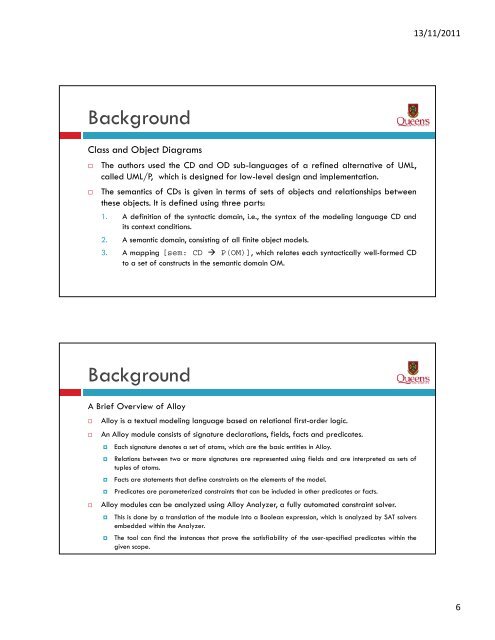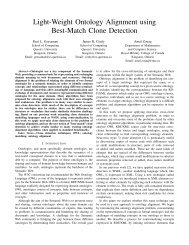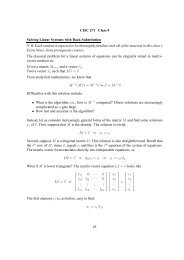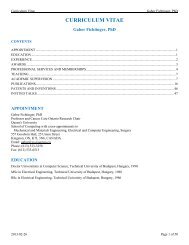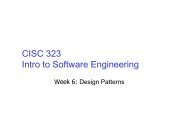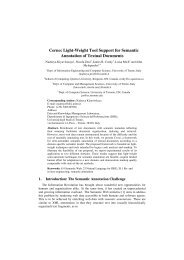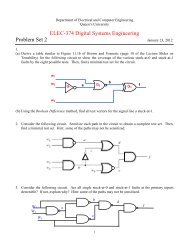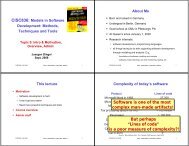Shahar Maoz, Jan Oliver Ringert, and Bernhard Rumpe
Shahar Maoz, Jan Oliver Ringert, and Bernhard Rumpe
Shahar Maoz, Jan Oliver Ringert, and Bernhard Rumpe
Create successful ePaper yourself
Turn your PDF publications into a flip-book with our unique Google optimized e-Paper software.
Background<br />
Class <strong>and</strong> Object Diagrams<br />
� The authors used the CD <strong>and</strong> OD sub-languages of a refined alternative of UML,<br />
called UML/P, which is designed for low-level design <strong>and</strong> implementation.<br />
� The semantics of CDs is given in terms of sets of objects <strong>and</strong> relationships between<br />
these objects. It is defined using three parts:<br />
1. A definition of the syntactic domain, i.e., the syntax of the modeling language CD <strong>and</strong><br />
its context conditions conditions.<br />
2. A semantic domain, consisting of all finite object models.<br />
3. A mapping [sem: CD � P(OM)], which relates each syntactically well-formed CD<br />
to a set of constructs in the semantic domain OM.<br />
Background<br />
A Brief Overview of Alloy<br />
� Alloy is a textual modeling language based on relational first-order logic.<br />
� An Alloy module consists of signature declarations, fields, facts <strong>and</strong> predicates.<br />
� Each signature denotes a set of atoms, which are the basic entities in Alloy.<br />
� Relations between two or more signatures are represented using fields <strong>and</strong> are interpreted as sets of<br />
tuples of atoms.<br />
� Facts are statements that define constraints on the elements of the model.<br />
� Predicates are parameterized constraints that can be included in other predicates or facts.<br />
� Alloy modules can be analyzed using Alloy Analyzer, a fully automated constraint solver.<br />
� This is done by a translation of the module into a Boolean expression, which is analyzed by SAT solvers<br />
embedded within the Analyzer.<br />
� The tool can find the instances that prove the satisfiability of the user-specified predicates within the<br />
given scope.<br />
13/11/2011<br />
6


